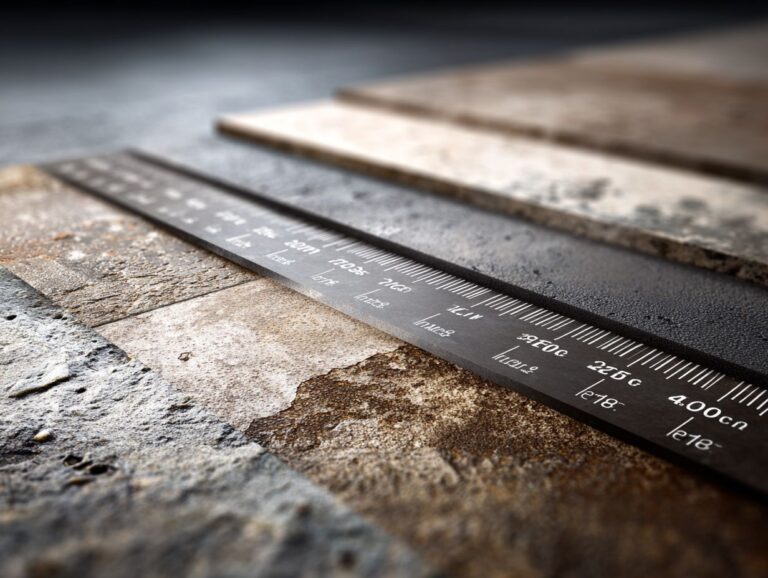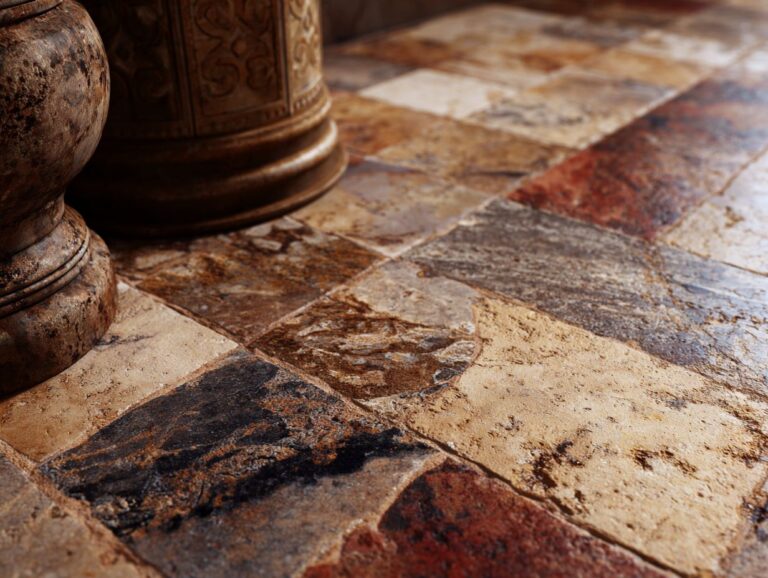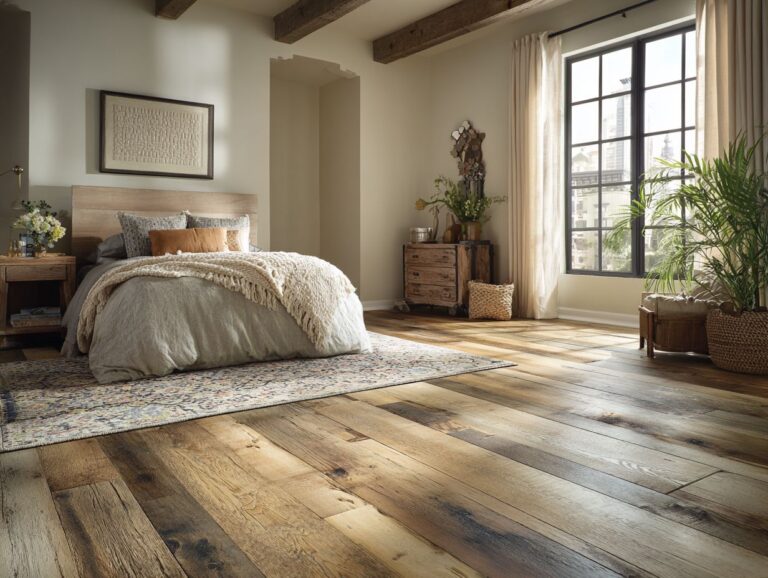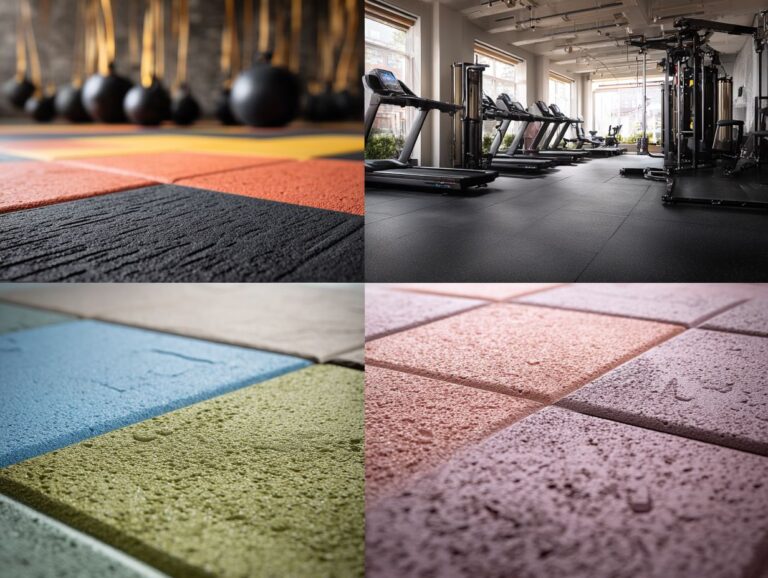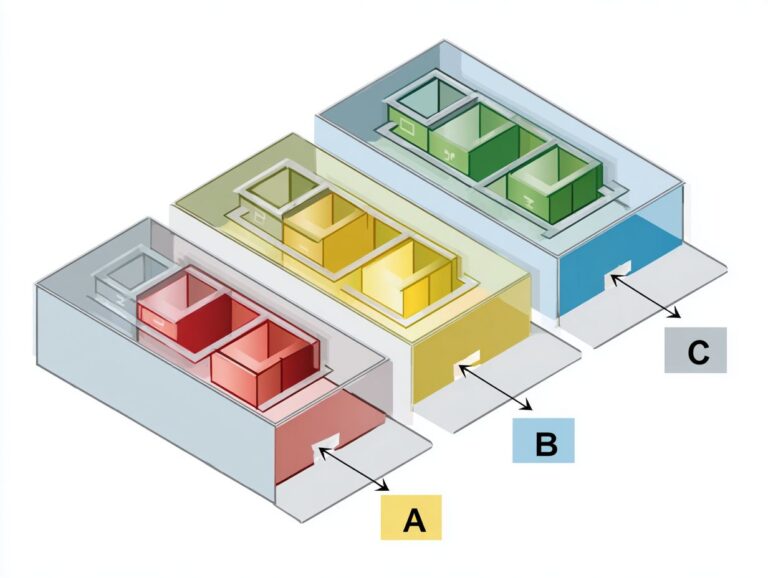2025 Flooring Trends – Colors, Materials, Patterns
Contents
- Introduction to 2025 Flooring Trends
- Flooring Trends Statistics 2025
- Color Trends in Flooring for 2025
- Materials Shaping Flooring Choices
- Patterns and Textures in Flooring
- Technological Advances in Flooring
- Regional Influences on Flooring Trends
- Frequently Asked Questions
- What are the predicted color trends for 2025 flooring?
- Which materials will be popular for flooring in 2025?
- What patterns can we expect to see in 2025 flooring?
- How will flooring trends differ between residential and commercial spaces in 2025?
- Are there any emerging trends in flooring materials for 2025?
- Will there be a shift towards more sustainable flooring options in 2025?
Introduction to 2025 Flooring Trends
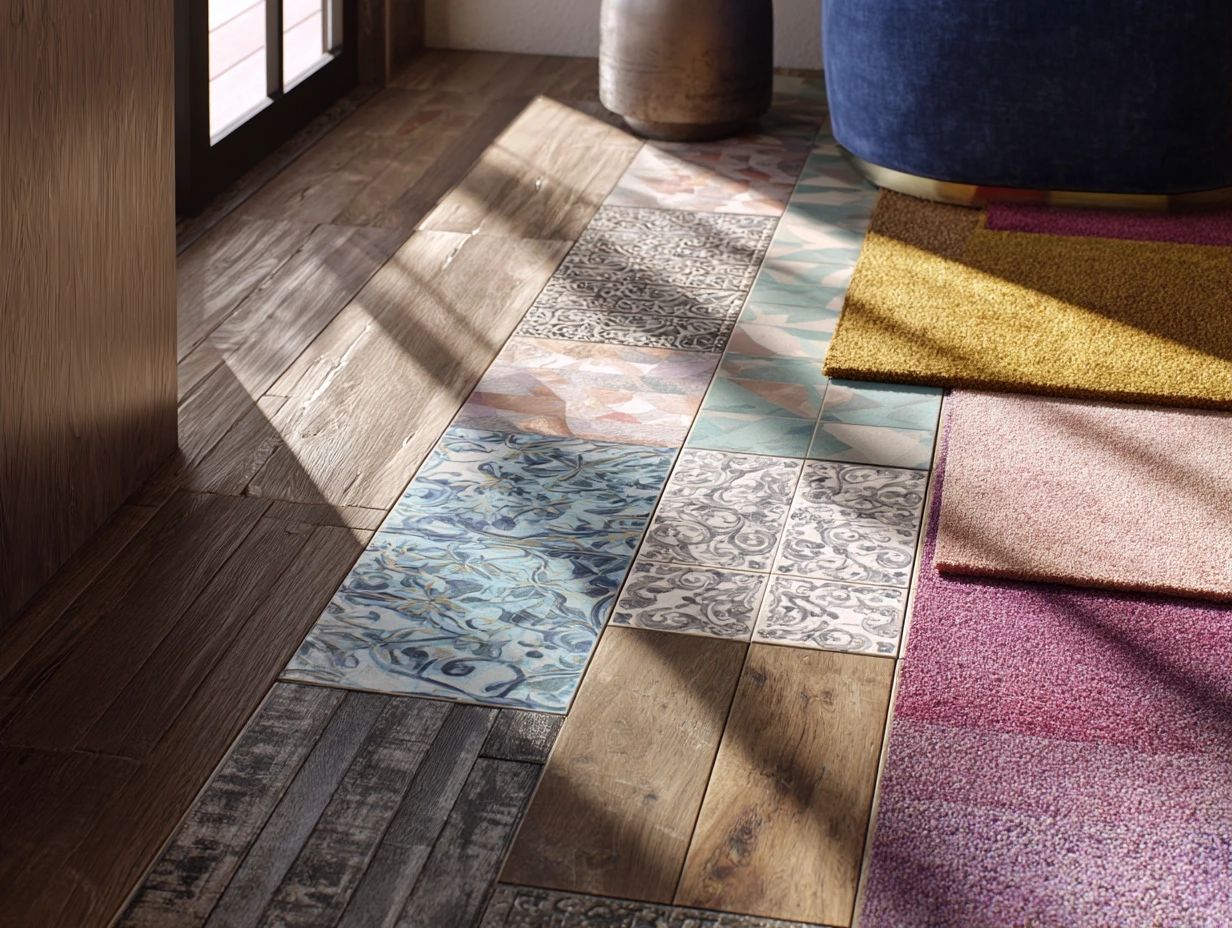
Key Takeaways:
Overview of Current Trends
Current flooring trends are dominated by the rise of luxury vinyl plank (LVP) and the increasing popularity of sustainable materials such as cork and reclaimed wood.
In 2024, LVP is projected to capture over 30% of the flooring market share, thanks to its affordability and versatility.
Consumers increasingly favor options that are eco-friendly; for instance, cork flooring has surged in popularity due to its renewable nature and natural insulation properties.
Reclaimed wood offers unique aesthetics and sustainability, appealing to environmentally conscious buyers.
Tools like the Resilient Flooring Calculator can help consumers evaluate which materials best match their eco-friendly goals while staying within budget.
Flooring Trends Statistics 2025
For those interested in the technical aspects of flooring, such as the manufacturing techniques used in laminate flooring, see also: High-Pressure vs Direct-Pressure Laminate Manufacturing.
Flooring Trends Statistics 2025
Flooring Industry Overview: Market Areas
Flooring Industry Overview: Market Problems
The Flooring Trends Statistics 2025 offers a complete look at the current trends in the flooring industry, pointing out demand areas and market difficulties. This information is important for stakeholders exploring the changing options in flooring solutions.
In terms of Market Segments, the data reveals that the residential segment accounts for a significant 58.0% of demand. This indicates a strong preference for home improvement and renovation activities among homeowners, likely driven by factors such as increased home ownership, a growing focus on interior aesthetics, and the desire for functional living spaces. In contrast, the commercial segment represents a substantial 42.3% of demand, showing strong growth in business building and renovation projects. This could be attributed to the expansion of retail spaces, office renovations, and hospitality sector developments.
- Market Challenges: The industry faces certain challenges, with a notable 70.0% dependency on Asian LVT/SPC supply. This reliance shows possible weak points in the supply chain, since political issues or problems in these areas might affect how materials are sourced and their costs. Companies might need to look into other sourcing methods or find more suppliers to reduce risks.
- Another challenge is the 45.0% potential impact of immigrant installers. A large part of the workers installing floors are immigrants, and changes in policies or labor market conditions might impact them. Making sure there are enough experienced workers and keeping the workforce steady are important for meeting project deadlines and maintaining quality.
The Flooring Trends Statistics 2025 emphasizes the need to study demand patterns and get ready for issues in supply chain and workforce. By paying attention to this information, people in the industry can plan more effectively to take advantage of opportunities and reduce possible problems in the flooring market.
Importance of Flooring in Interior Design
Flooring plays a critical role in defining home aesthetics, impacting both functionality and style, accounting for 20% of a room’s overall design effect.
Choosing the right flooring material can significantly alter the ambiance of a room. Hardwood flooring creates a cozy and high-end look, making rooms feel welcoming and luxurious.
Conversely, carpeting provides a cozy and soft atmosphere, ideal for bedrooms and playrooms.
Laminate and vinyl are affordable options for busy areas and can look like wood or tile.
When choosing your flooring, think about how the room will be used, how much upkeep you want, and the general style you want to achieve a consistent and attractive look. If you’re interested in budgeting for your project, you might want to consider regional flooring installation labor rates.
Color Trends in Flooring for 2025
As we enter 2025, flooring color trends are changing, with both bright and natural shades becoming popular in homes and businesses.
Bold and Vibrant Colors
Colors like dark blues, bright greens, and striking reds are popular choices for flooring today, allowing homeowners to express their individual style.
To use bright colors in flooring, look at brands like Mohawk, which has introduced a new line of colorful luxury vinyl products. For example, their dark blue choice can make a striking contrast with plain walls, while a bright green can bring life to a room.
Businesses such as Shaw provide bright carpet tiles that enable unique designs, combining practicality with style. When choosing options, make sure they align with your design goals and think about how long they will last and how easy they are to maintain.
Earthy and Natural Tones
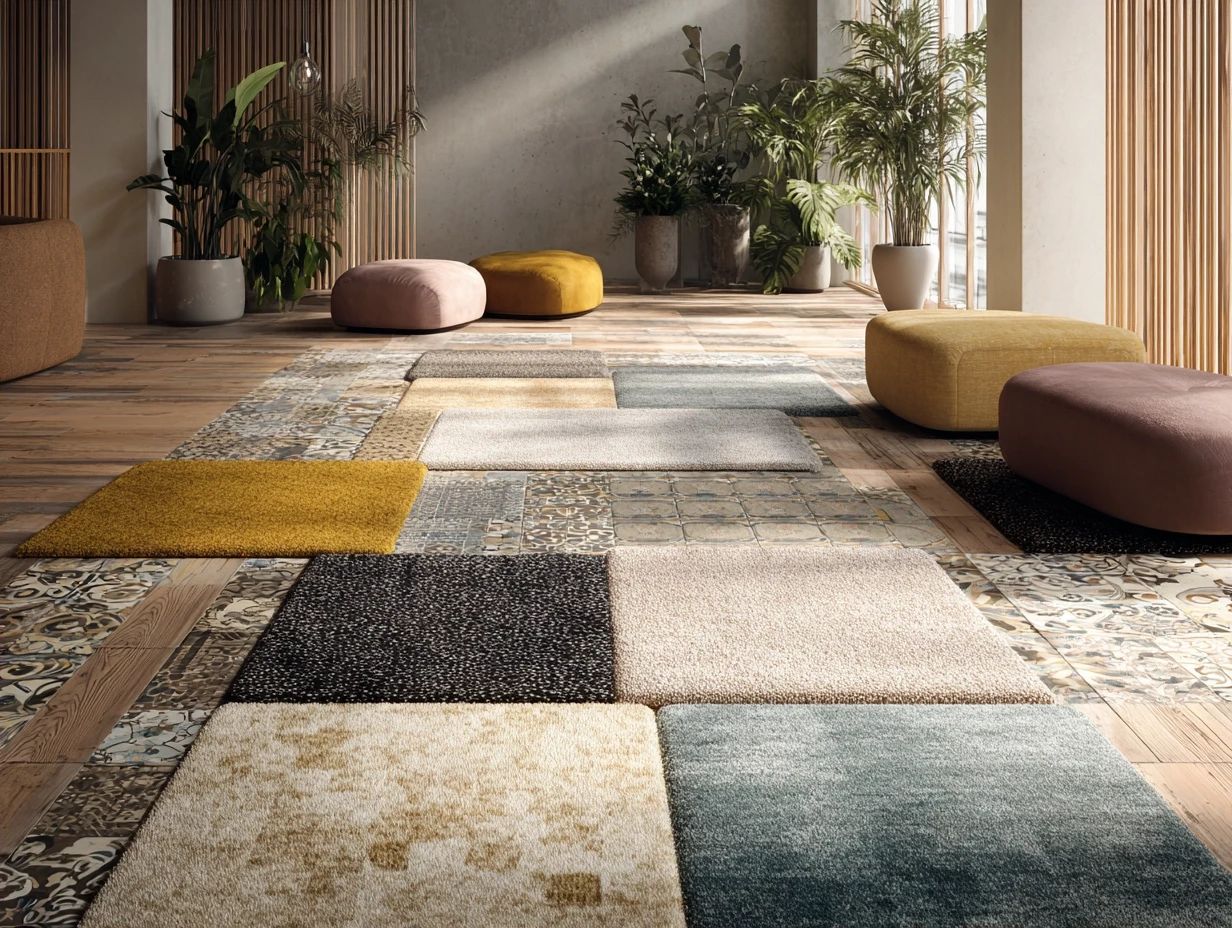
Earthy tones, such as warm browns, soft beiges, and natural greens, create a cozy atmosphere while promoting a connection to nature in interior spaces.
Using these colors can improve designs that focus on nature and eco-friendliness. Flooring options like cork, reclaimed wood, and bamboo embody earthy tones while offering eco-friendly credentials.
For example, cork flooring keeps heat in and resists water, which makes it perfect for kitchens. Reclaimed wood brings a unique look and is better for the environment. Bamboo grows quickly and comes in bright greens and warm yellows.
Choosing any of these materials links your space to nature and supports the increasing focus on eco-friendly practices in interior design.
Monochromatic Schemes
Monochromatic flooring schemes are gaining traction, offering a sophisticated and timeless look that complements contemporary interior design.
This style allows for a seamless flow throughout the space, enhancing a sense of unity. For instance, pairing sleek gray tiles with light gray walls creates a calming effect, promoting tranquility in your home.
You might also consider using varying shades of blue, such as navy hardwood floors with sky-blue accent walls, which instill a refreshing ambiance.
Using shades of a single color can create a peaceful and balanced atmosphere, making them ideal for spaces where you want to unwind, such as bedrooms and living rooms.
Materials Shaping Flooring Choices
The selection of flooring materials now mirrors both style preferences and functional requirements, with environmentally friendly and new solutions being popular.
Eco-Friendly Options
Choices like cork, bamboo, and reclaimed wood let people who care about the environment improve their homes without harming the planet.
Among these, bamboo is particularly noteworthy due to its rapid growth-some species can mature in just three to five years. This makes bamboo a highly renewable resource.
Cork, taken from the bark of cork oak trees, is sustainable and offers great thermal insulation and sound absorption.
On the market, sustainable flooring is experiencing significant growth, projected to reach $450 billion by 2027, driven by consumer demand for green products. Check for certifications like FSC to confirm your flooring follows responsible forestry guidelines.
Luxury Vinyl Plank (LVP) Innovations
Luxury vinyl plank (LVP) is getting better with fresh styles, surfaces, and durability, making it a favored choice for houses and companies.
Today’s LVP products showcase lifelike wood and stone designs, with textures that imitate the touch of real materials. Water resistance is a significant trend, ideal for kitchens and bathrooms.
Brands like Mohawk are leading the way, offering collections such as the RevWood series, which combines aesthetics with waterproof performance. Installation is now easier with options like click-lock systems, which let people install luxury vinyl plank floors by themselves. This makes it a practical choice for those looking to update their flooring.
Engineered Wood vs. Solid Wood
The debate between engineered wood and solid wood continues, with each option offering unique advantages in terms of durability, appearance, and cost.
Engineered wood does not warp easily and can handle moisture well, so it works great in places like basements where humidity changes frequently. Solid wood, while beautiful and long-lasting, may expand or contract in such environments.
In terms of cost, engineered wood typically ranges from $3 to $10 per square foot, while solid wood averages between $5 and $15, depending on the type of wood.
Brands like Shaw offer a range of engineered options, while Mohawk and Bruce are known for their solid wood selections.
Maintenance for both involves regular cleaning and occasional refinishing, but engineered wood generally requires less upkeep.
Textured and 3D Materials
Textured and 3D flooring materials are on the rise, providing a tactile and visually engaging experience that adds depth to interior spaces.
These materials can greatly improve a cozy atmosphere with their distinctive designs.
For instance, cork flooring offers a warm touch and excellent sound absorption, perfect for quiet spaces. Meanwhile, 3D vinyl planks mimic natural wood or stone while providing added durability and easy maintenance.
You can easily install it yourself using the self-stick versions. Using different finishes and colors can improve your decor, changing basic rooms into inviting areas that inspire creativity and relaxation.
Patterns and Textures in Flooring
Patterns and textures are important parts of flooring design, giving spaces a distinct look and feel.
Geometric Patterns

Geometric patterns like hexagons and chevrons are becoming more common because they make spaces look visually appealing.
To use these patterns well, designers often use software like AutoCAD or SketchUp.
For example, hexagonal tiles create a modern look in kitchens and bathrooms, while chevron patterns can add a classic touch to hardwood floors.
When laying out designs, tools like Google SketchUp help visualize the arrangement before installation.
Consider varying the color palette within these patterns, such as using monochromatic shades for a sophisticated style.
Good installations focus on both appearance and usefulness, making sure the patterns improve the design without overpowering it.
Herringbone and Chevron Designs
Herringbone and chevron designs are traditional patterns that add a fashionable look to any type of flooring, which is why designers often choose them.
These designs have seen a resurgence in both residential and commercial spaces, particularly in high-end apartments and boutique hotels.
For instance, a New York City loft integrated herringbone oak flooring to complement its modern aesthetic, creating a striking visual impact.
Simultaneously, a local caf used chevron-patterned tiles to improve its retro feel, showing that these patterns can fit different styles.
Tools like AutoCAD can help visualize these patterns in your space, while local showrooms often showcase samples to help solidify your design choices.
Mixing Patterns for Unique Spaces
Mixing different flooring patterns can create a unique aesthetic and functional layout, redefining how spaces interact and flow.
To successfully mix patterns, start by choosing two or three contrasting styles that complement each other. For example, pair a sleek, modern tile with a rustic hardwood to add warmth.
Consider using a geometric tile in the entryway, followed by a herringbone pattern in the living room. Visual examples, such as images from interior design magazines, can help illustrate effective combinations.
Use a consistent color scheme for patterns to keep the look unified, so different flooring styles work well together and do not conflict.
Technological Advances in Flooring
New technology is changing the flooring industry by bringing in intelligent solutions that meet current living demands and improve user satisfaction.
Smart Flooring Solutions
Innovative flooring options, such as materials that control temperature and built-in sensors, are changing the way we use our homes.
For instance, heated floors can be installed using brands like Warmup, which offers electric heating systems that provide comfort during cold months.
Another innovative option is self-cleaning flooring from companies like NanoShield, using hydrophobic technology to repel dirt and stains, potentially saving on cleaning costs.
While heated flooring can range from $6 to $15 per square foot, investing in self-cleaning materials may involve a higher initial cost, typically about $25 per square foot. Both options improve home comfort and keep the surroundings clean.
Durability and Maintenance Innovations
Innovations in flooring durability and maintenance are setting new standards, enabling consumers to enjoy stylish options that require minimal upkeep.
Among the leading materials, luxury vinyl planks stand out for their resilience and aesthetic appeal. Mohawk’s SmartCushion technology adds more padding and lessens sound, making the floor softer and safeguarding it simultaneously.
Scratch-resistant finishes available in options like Shaw’s Floorte line make cleaning effortless, maintaining the flooring’s allure over time. Homeowners can also benefit from easy-to-clean surfaces with options such as laminate flooring, which often comes with a protective coating to fend off stains.
These new ideas improve style and make daily upkeep easier.
Regional Influences on Flooring Trends
Flooring choices differ greatly across areas, influenced by local culture, weather, and how people live.
Urban vs. Rural Preferences
Urban consumers often lean towards luxury vinyl and modern designs, while rural homeowners prefer practical, durable options like hardwood and tile.
This distinction is rooted in lifestyle and environment. In cities where homes are often smaller, luxury vinyl is popular because it’s simple to care for and looks good in many styles, fitting well in tall apartment buildings.
For example, a survey by the National Wood Flooring Association found that 70% of urban residents prioritize style over durability. Conversely, rural homeowners value hardwood and tile for their longevity, with 65% citing resilience against wear and tear from pets and outdoor activities.
Knowing these preferences can guide how products are created and marketed.
Cultural Influences on Design Choices
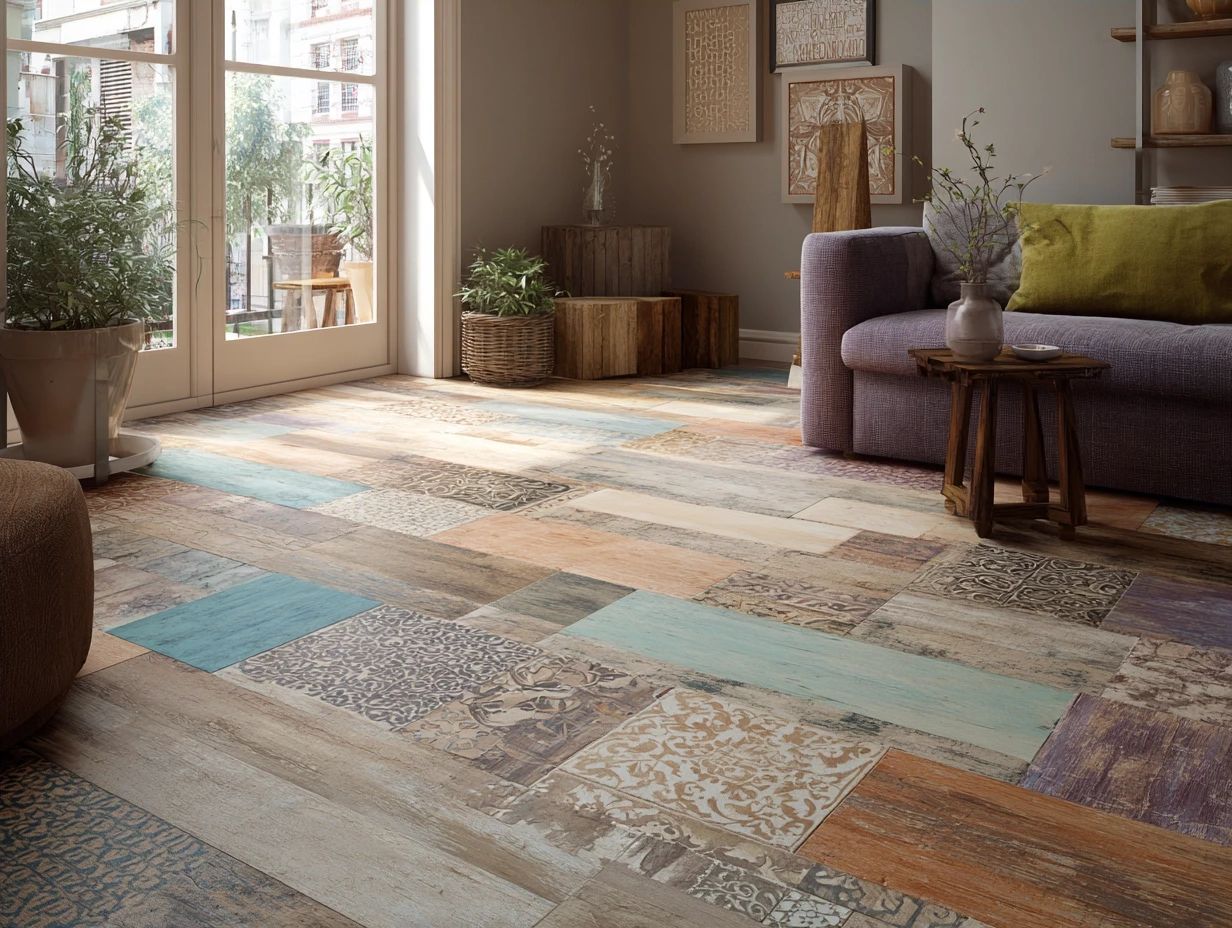
Cultural backgrounds significantly influence flooring design choices, with traditional materials often reflecting regional heritage and aesthetics.
In many Asian households, bamboo flooring is favored for its sustainability and connection to nature, embodying a minimalist aesthetic.
Alternatively, Mediterranean styles often include terracotta tiles, which create a warm and natural feel, perfect for areas that enjoy outdoor life.
In contrast, Scandinavian styles often feature light-colored woods, promoting a clean, airy feel that aligns with their principles of functional beauty.
By knowing these preferences, designers can make spaces that meet aesthetic standards and respect the cultural stories linked to each flooring choice.
Summary of Key Trends
The key trends shaping the flooring market for 2025 include sustainability, innovative materials, and a blend of aesthetics and practicality.
Sustainability is paramount, with many manufacturers adopting eco-friendly practices and materials like bamboo and recycled vinyl.
For instance, companies like Mohawk offer carpets made from recycled plastic bottles, appealing to environmentally conscious consumers.
Materials like cork or luxury vinyl tile offer strength and comfort, appealing to buyers who want both style and practicality.
People want flooring that combines good looks with being easy to care for. Water-resistant laminate is an example of this.
Predicted Trends for 2026 and Beyond
Predictions for 2026 indicate a continuation of the focus on sustainability, with new technologies further enhancing flooring durability and design versatility.
Advancements in eco-friendly materials, such as bamboo and recycled plastics, will likely dominate the market. Many manufacturers have started including intelligent features in flooring that allow users to monitor wear and moisture levels with mobile apps.
For instance, companies like Mohawk and Karndean are pioneering renewable material options that reduce environmental impact while offering durability. As home technology grows, more flooring choices will connect with home systems, offering functions like temperature management or sound control.
Frequently Asked Questions
What are the predicted color trends for 2025 flooring?
The 2025 flooring color trends are expected to be neutral and earthy tones, such as warm greys, beiges, and browns. Bright colors, such as dark blues and greens, might become more popular.
Which materials will be popular for flooring in 2025?
In 2025, sustainable and environmentally-friendly materials are predicted to be popular for flooring, such as bamboo, cork, and reclaimed wood. Vinyl and tile are also expected to remain popular choices.
What patterns can we expect to see in 2025 flooring?
Geometric patterns, such as herringbone and chevron, are expected to continue to be popular in 2025 flooring trends. Other patterns, like florals and Moroccan-inspired designs, may also see a rise in popularity.
How will flooring trends differ between residential and commercial spaces in 2025?
In residential spaces, cozy and comfortable flooring options, like plush carpet and soft hardwoods, may be popular in 2025. In commercial spaces, durable and easy-to-maintain options, like laminate and luxury vinyl, may be more prevalent.
Are there any emerging trends in flooring materials for 2025?
In 2025, a new trend in flooring materials is biophilic design. This style uses natural features and designs to help people feel connected to nature. This may include materials like cork, stone, and wood.
Will there be a shift towards more sustainable flooring options in 2025?
Yes, in 2025 there is expected to be a greater emphasis on sustainability and eco-friendliness in flooring. This may include the use of recycled materials and non-toxic finishes, as well as a focus on durability and longevity in flooring choices.
